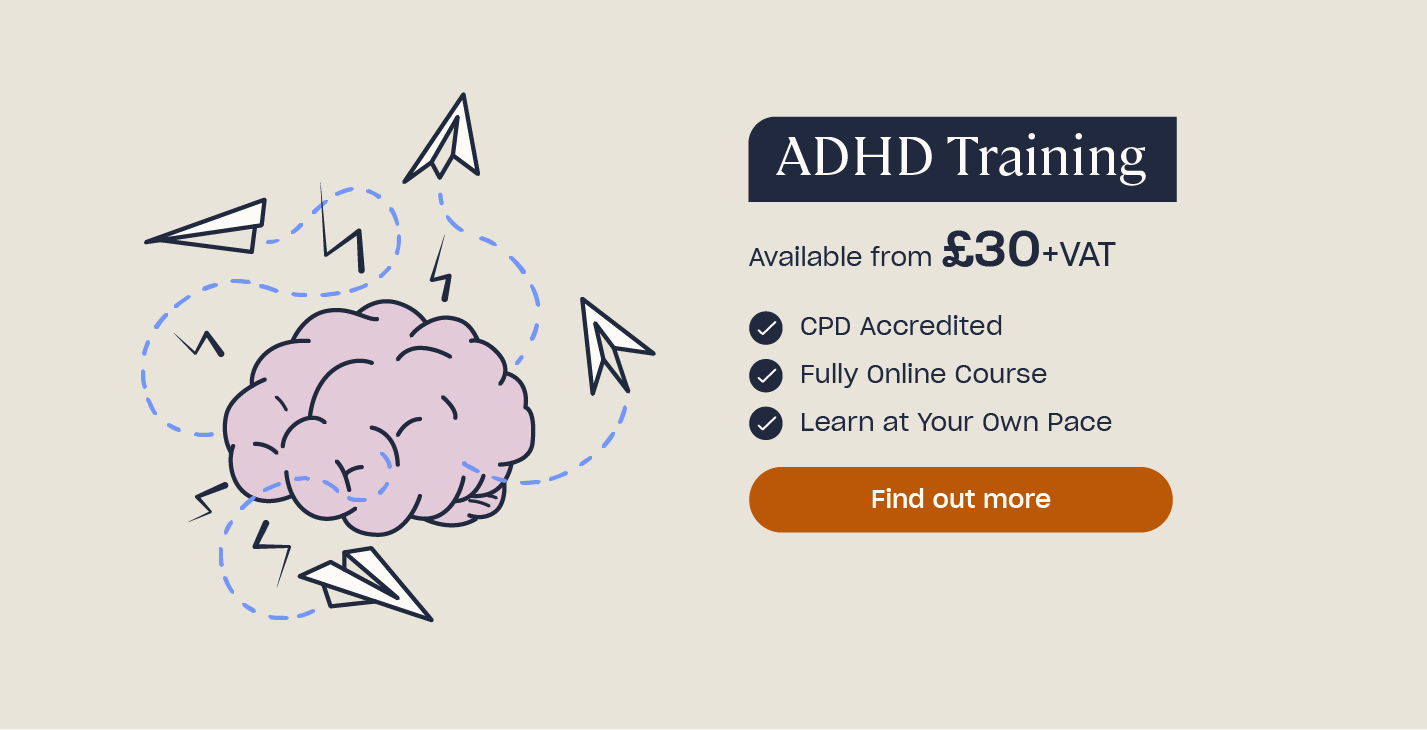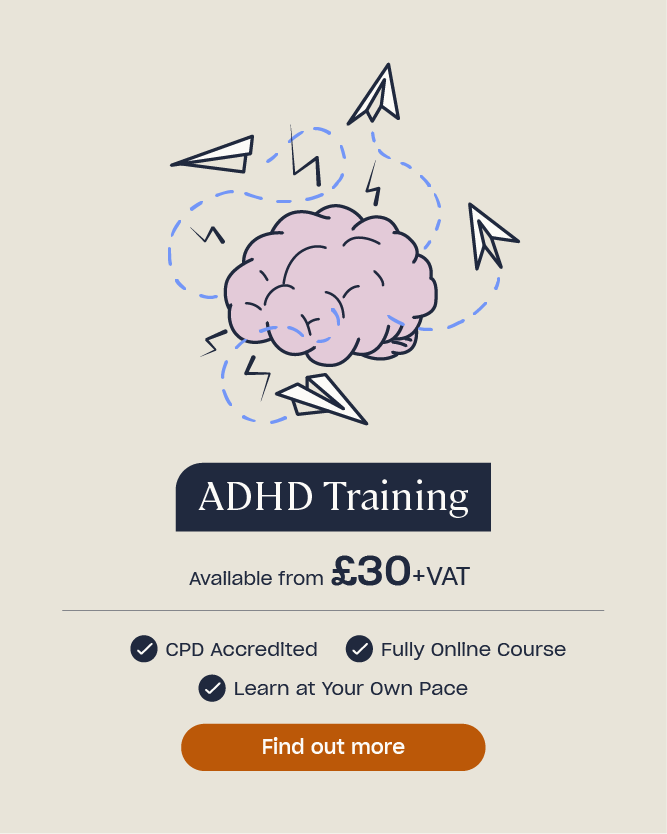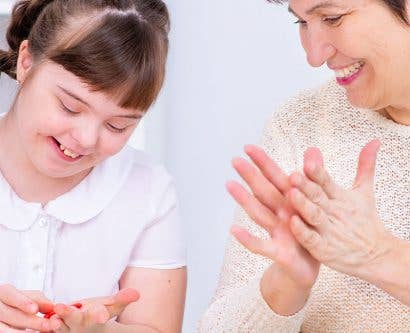Recognising Signs of ADHD in Children
ADHD stands for attention deficit hyperactivity disorder and is a common neurodevelopmental condition. Around 5% of children and approximately 3-4% of adults in the UK have ADHD. Whilst the condition is usually diagnosed in childhood, it is becoming increasingly common for adults to receive a diagnosis, having struggled to manage symptoms of ADHD throughout their lives.
Recognising the signs of ADHD in children can allow for an early diagnosis, meaning that the right help and guidance can be arranged to support the child and those around them. There are many different strategies which can be used to help children with ADHD feel understood and allow them to experience full and happy lives.
In this article, we will look at some signs that may indicate a child has ADHD and offer advice regarding the next steps to take if you notice a child in your care displaying these.

What is ADHD in Children?
ADHD is a neurological condition which can impair social and cognitive functioning in everyday life. However, the exact cause of ADHD isn’t completely understood, though it is often linked to genetics. The likelihood of a child having ADHD can also be influenced by factors such as their home life or childhood trauma, such as premature birth or prenatal exposure to substances such as alcohol.
The signs of ADHD in children tend to differ slightly from those seen in adulthood and can often be easier to spot. In many cases, a child’s symptoms will become noticeable when they start school, especially when teachers and support staff are well-informed and know the signs to look out for. Often, some of the first indicators may be a lack of concentration, finding it difficult to sit still or follow instructions, or displaying hyperactivity.
In comparison, adults with ADHD may experience restlessness rather than hyperactivity. They may find it challenging to focus at work or manage their time effectively and may experience frequent stress or anxiety. This is why it can be more difficult for adults to receive a diagnosis, as they may push aside these symptoms and accept them as a normal part of adult life.
Different Types of ADHD
ADHD can be categorised into three types:
- Inattentive: in these cases, children may lack focus and often appear to ‘drift away’, meaning they miss important information and instructions. They may also appear forgetful and disorganised.
- Hyperactive-Impulsive: children with this type of ADHD may show more physical symptoms. They may be overly active, speak more frequently than their peers, or fidget a lot, finding it difficult to remain still and engage in calm activities.
- Combined: some children may show a combination of both types of the condition. In these cases, as there are more signs to look out for, it can be easier to diagnose.
It is also worth noting that regardless of the type of ADHD a child experiences, the symptoms tend to differ slightly depending on gender. Boys are around three times more likely to be diagnosed with ADHD than girls. This may be because the symptoms displayed by girls are often more subtle and tend to be linked to internal concerns such as anxiety, inattentiveness and disorganisation, which can be more difficult to spot.
To find out more, take a look at our article: How Does ADHD Differ in Females?
Signs of ADHD in Toddlers
Although many children are diagnosed with ADHD when they begin school, it is possible to notice signs and symptoms when they are younger. Many parents and carers will know that toddler-aged children are, by nature, always on the go. It can be difficult to know when potentially normal, excitable toddler behaviour becomes a cause for concern.

While most toddlers tend to be lively and active a lot of the time, a toddler with ADHD may display these behaviours even more frequently. They may feel a need to move constantly and appear overly energetic. They may only play with a certain toy or engage in a certain activity briefly before moving on to something else. Other potential signs include struggling to enjoy quieter activities such as reading a book or sitting still to eat their dinner.
As mentioned above, many of these behaviours can be expected of children in this age bracket. However, if these behaviours seem extreme or are particularly noticeable compared to their peers, it may be worth seeking further advice or guidance.
Signs of ADHD in Children and Preteens
As children begin their school years, it can be much easier to recognise the signs of ADHD as their behaviour may stand out more obviously against that of their peers. In some cases, especially in hyperactive-impulsive children, they may get in trouble due to their behaviour, which can appear disruptive. This is why teaching staff need to understand the condition and be able to recognise when they may be dealing with a case of ADHD.

Children with ADHD can find everyday life challenging. They can struggle to follow the rules and routines outlined for them, and disorganisation can lead to issues with homework. In many cases, children will struggle to regulate their behaviour, and this can lead to difficulties in forming friendships. At home, frustrations at school may cause some children to become angry, and they may project their feelings onto their parents/carers or siblings.
Another indicator which may be recognised at this stage is the child’s academic performance. Children with inattentive ADHD are likely to miss important information shared in class, and they may struggle to focus on a task, meaning they find it difficult to demonstrate their abilities.
In cases where ADHD is left undiagnosed, these challenges can become serious barriers to learning. However, with early intervention and the right strategies, children with ADHD can access education, build relationships and make superb progress alongside their peers.
Looking to Learn More?
Our ADHD Awareness course can help anyone who works closely with children to understand more about what ADHD is, how best to recognise it, and which strategies are available to support children.
Signs of ADHD in Teenagers
The teenage years can be challenging for various reasons. Young people at this stage are experiencing many changes, including both physical and emotional changes. Plus, at school, they may feel under increased pressure to perform well as exams approach. Relationships can also become more complex at this stage, so, understandably, teenagers who are also dealing with symptoms of ADHD can find this a really difficult time.

Often, as young people enter this stage of their lives, symptoms such as hyperactivity tend to decrease. Instead, this can present itself as risky and impulsive behaviour, with some research suggesting that teenagers with ADHD are more likely than their peers to experiment with drugs and alcohol.
Without the correct support and intervention, teenagers with ADHD can continue to struggle with their academic performance, as there is more for them to remember and subjects become more difficult. If you teach young people with ADHD, take a look at our article, which provides teaching tips and strategies to help you offer the right support.
It is also worth noting that it can be common for teenagers with ADHD to experience other mental health issues, such as anxiety and depression. Girls, in particular, may experience issues with self-esteem and confidence, so it is important to understand how to support young people in these circumstances. Take a look at our article: How to Help a Child With Anxiety in the Classroom to learn more.
What to Do if You Think a Child has ADHD
As we have seen, ADHD can present itself in many ways, and no two children will experience symptoms in quite the same way. The good news is that as a parent/carer, teacher, social worker, or any similar role, it is not your responsibility to diagnose ADHD yourself. Similarly, you are not expected to create a support plan for the child alone. Instead, it is important to seek professional help and advice, and luckily, there is plenty of support available.
If you suspect a child in your care may have ADHD, it is a good idea to gather some notes about the signs and symptoms you have noticed. It can be helpful to share your concerns with others involved in caring for the child. For example, if you are a parent/carer and suspect your child may have ADHD, ask to meet with their teacher, who may draw upon advice from the school Special Educational Needs Coordinator (SENCO). Together, you will be able to share thoughts and concerns and begin to build a clearer picture of the child’s behaviour.
Ultimately, any concerns will need to be shared with a healthcare professional. In the first instance, this is likely to be a GP. A GP will then be able to explore the issue further and begin to involve other professionals if necessary. In time, a support plan can be developed to help the child and those around them to understand the condition and how best to manage it moving forward.
How to Support a Child with ADHD
One of the most effective ways to support a child with ADHD is to increase your understanding of the condition. This will allow you to understand their behaviours better, appreciate how they may be feeling and gain awareness of the challenges they face. Our article: ADHD Myths and Facts will help you to discover more.

Below are some tips to help you get started with supporting a child with ADHD:
- Be patient: especially with younger children and preteens, their behaviour may be challenging. However, it is important to remain as calm and patient as possible, as your frustration will only make the situation worse.
- Offer regular prompts: some children will easily become distracted and lose focus, so it is important to keep an eye on them and calmly remind them of the task.
- Show understanding: if a child struggles to regulate their emotions or behaviour, try to show empathy and understanding to help them understand their feelings better.
- Ensure support is in place at school: school staff must know if a child has ADHD. A support plan and strategies must be in place for the child to navigate this potentially challenging environment.
- Take time to explain boundaries: in some cases, a child with ADHD may not fully understand why their behaviour is unacceptable, and taking the time to calmly explain the situation and help them realise an alternative action can be beneficial.
- Share information: the more information made available about strategies which work with the child or particular challenges they face, the better. This means that all those involved in caring for the child can create a secure support network.
Recognising the signs and symptoms of ADHD can be challenging. However, it is important to remember that if you think a child in your care may have ADHD, you are not alone in dealing with it. There are many strategies which can significantly help a child with ADHD to navigate the world around them and understand their symptoms better, and working together to put a support plan in place is the best course of action.
Further Resources:
- ADHD Awareness
- ADHD Myths and Facts
- How Does ADHD Differ in Females?
- Managing ADHD in the Classroom: Teaching Strategies and Tips
- Recognising the Signs of Dyslexia in Children
- Sensory Overload in Children











